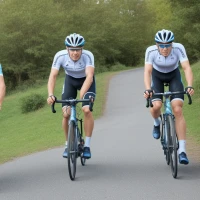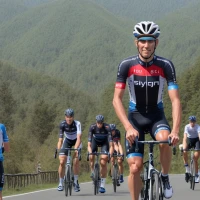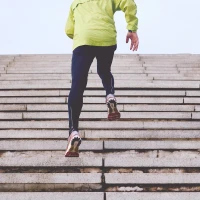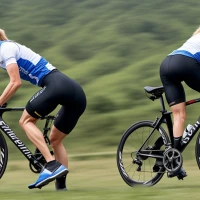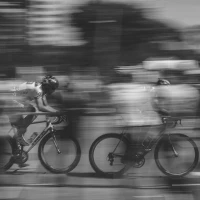Cycling is not just a mode of transportation or a leisurely pastime; it’s a gateway to a transformative journey for your body. With each pedal stroke, you’re not only propelling a bike forward – you’re also driving significant changes in your physique. This comprehensive article dives into the astounding array of benefits that come from regular cycling. From reshaping your muscular contours to enhancing cardiovascular health, discover how the simple act of cycling can lead to a profound physical metamorphosis.
As one of the most effective exercises for building a strong, lean physique and bolstering overall health, cycling has the power to redefine your body composition and well-being. Let’s unveil the transformation that occurs as you integrate cycling into your lifestyle and explore the multiplicity of ways your body will adapt and improve.
The Cardiovascular Renaissance: Reinvigorating Your Heart and Lungs
Pumping Up Cardiovascular Fitness
Cycling stands out in its ability to significantly boost your cardiovascular fitness. By consistently engaging in this aerobic activity, your heart and lungs undergo an impressive renovation. Here’s how:
- Strengthening the Heart Muscle: Regular cycling increases your heart rate, which in turn strengthens the cardiac muscle, making it more efficient at pumping blood.
- Enhancing Lung Capacity: As your demand for oxygen rises during a cycling session, your lung capacity expands to meet the body’s needs.
- Boosting Circulation: Improved cardiovascular fitness leads to better blood flow, which delivers more oxygen and nutrients to your muscles and organs.
- Lowering Resting Heart Rate: Athletes often have lower resting heart rates because their hearts pump more blood per beat, a clear sign of a strong cardiovascular system.
The Ripple Effect on Cardiovascular Health
Cycling doesn’t just increase your fitness level; it has a domino effect on your overall cardiovascular health:
- Reduction in Blood Pressure: Regular cyclists often enjoy lower blood pressure, reducing the risk of heart disease.
- Cholesterol Management: Engaging in exercises like cycling can help lower bad cholesterol (LDL) and increase good cholesterol (HDL).
- Decrease in Fat Levels: Aerobic exercises, such as cycling, are fantastic for combating fat, especially visceral fat that surrounds your organs and can lead to cardiovascular complications.
- Improved Blood Sugar Control: Active individuals typically maintain better control over their blood sugar levels, which is crucial for preventing or managing diabetes.
Sculpting the Lower Body: Toned Legs, Glutes, and Calves
Crafting Muscular Legs and Glutes
It’s undeniable that cycling benefits for legs plays a pivotal role in toning and building the muscles in your lower body. The resistance element of cycling means that it not only burns fat but also builds muscle around the legs and glutes. Key changes include:
- Quadriceps Growth: Your thigh muscles, or quadriceps, will become more pronounced due to the downward push in each cycling stroke.
- Hamstring Development: The back of your legs will gain strength as they contract to pull up the pedals.
- Gluteal Enhancement: The glutes receive a significant workout during cycling, leading to firmer, well-shaped buttocks.
- Calf Definition: Cycling promotes calf muscle definition due to the repeated pushing and pulling motions during pedaling.
The Importance of Progressive Resistance
To continue to see changes and improvements in muscle tone and strength, you will need to progressively increase the resistance or intensity of your indoor cycling bike benefits workouts. This principle ensures that your muscles do not plateau but continue to be challenged:
- Hill Climbing: Riding up inclines or increasing resistance on a stationary bike requires more power from your lower body muscles.
- Interval Training: Incorporating bursts of high-intensity riding followed by periods of recovery can enhance muscle building and cardiovascular benefits.
- Long-Distance Rides: Lengthening the duration of cycling sessions increases endurance, which leads to greater muscle stamina and a leaner physique.
Achieving a Core Revolution: The Abdominal and Lower Back Benefits
Strengthening Core Muscles
bike cycling benefits may not seem like a core-focused activity, yet it’s incredibly effective at building a strong and stable core. Maintaining a proper cycling posture requires deep core engagement:
- Abdominal Firming: As you stabilize yourself on the bike, the transverse abdominis and obliques tense, leading to a tighter and toned midsection.
- Lower Back Fortification: Your lower back muscles, including the erector spinae, work diligently to keep you upright while cycling, enhancing their strength and endurance.
- Better Posture: A strong core from regular cycling can lead to improvements in overall posture, even when you’re off the bike.
Core Stability: The Unseen Cycling Challenge
The core’s role in daily 10 km cycling benefits is often underestimated, but core strength plays a crucial role in efficient power transfer from your body to the bike. A stable core supports everything from balance to injury prevention:
- Optimal Power Transfer: A solid core ensures that the power generated by your legs is effectively transferred to the pedals.
- Balance and Coordination: Maneuvering a bike, especially during turns and over uneven terrain, relies heavily on a sturdy core for balance.
- Injury Prevention: A stronger core reduces the likelihood of lower back pain and injuries, which are common concerns for cyclists.
The Upper Body Equation: Does Cycling Impact the Arms and Shoulders?
Light Engagement for Toned Arms and Shoulders
While cycling is predominantly a lower-body workout, your arms and shoulders also benefit from this exercise. You may not build bulky muscles here, but you can expect a toned appearance:
- Arm Muscle Stability: Gripping the handlebars and supporting your upper body engages the arm muscles lightly.
- Shoulder Muscle Engagement: Your shoulders work to stabilize your torso and assist in maintaining balance as you ride.
- Upper Body Endurance: Although the workout is subtle, long rides contribute to the endurance of your upper body muscles.
A Comprehensive Workout Plan for Symmetry
For those seeking a balanced physique with more prcalories burned on exercise bikeounced upper-body muscle development, it’s recommended to complement cycling with other forms of exercise. Consider integrating:
- Weight Training: To build more upper body muscle, incorporate weightlifting exercises for the arms, chest, back, and shoulders.
- Swimming or Rowing: These activities offer a powerful upper body workout and cardiovascular benefits, much like cycling.
- Cross-Training: Engage in exercises that target the upper body, such as push-ups, pull-ups, and boxing, to create balance with the lower-body strength gained from cycling.
The Mental Rejuvenation: Beyond the Physical Benefit
Cycling is not only a route to a commanding physique; it’s also about the health of your mind. The psychological benefits of cycling are profound:
- Stress Reduction: The rhythmic, repetitive motions in cycling are known to lower stress levels and have a meditative effect.
- Mood Enhancement: Exercise, including cycling, stimulates the production of endorphins, often labeled as “feel-good” hormones.
- Mental Clarity and Focus: Regular cyclists often describe heightened awareness and concentration both during and after a ride.
The Endurance Mindset: Building Mental Resilience Through Cycling
Cycling’s impact on mental well-being can translate into increased resilience in other areas of life. The lessons learned on a bike – persistence, coping with discomfort, and goal setting – are easily transferable skills:
- Overcoming Challenges: Long or intense bike rides teach you how to push through difficulties.
- Goal Achievement: Setting cycling goals and achieving them translates into a mindset that appreciates persistence and hard work.
- A Sense of Community: Cycling can be highly social, offering opportunities to join clubs or groups that foster a sense of belonging and support.
Conclusion: The Comprehensive Transformation Awaiting Cyclists
Unveiling the impact of cycling on the body reveals a tapestry of benefits that extend far beyond physical changes. While your body undergoes a remarkable transformation, gaining muscle tone, cardiovascular endurance, and a healthier composition, your mind experiences a renewal just as potent. Cycling reshapes your physique, while also offering a mental retreat, where each ride propels you towards a robust and more vibrant self.
For those on the brink of taking up cycling, it delivers a promise of reinvention – both seen in the mirror and felt in the heart. Whether you’re seeking to improve physical fitness, mental clarity, or simply find a sustainable and enjoyable form of exercise, embracing the cycling lifestyle can lead to a more balanced and fulfilled existence. So, clip in and pedal away – your journey toward transformative health starts now.




